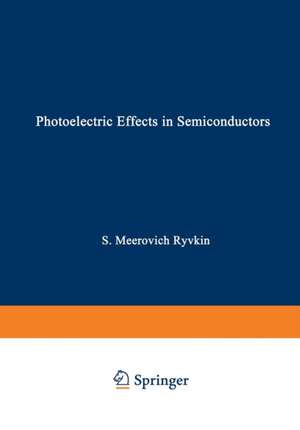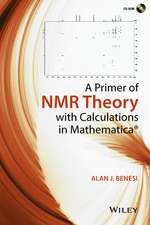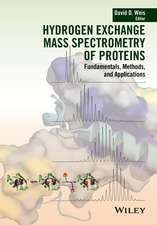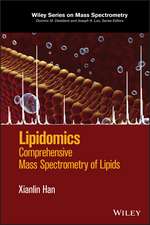Photoelectric Effects In Semiconductors / Fotoélektricheskie Yavlena V Poluprovodnikakh / Фотоэлектрические явления в полроводниках
Autor Solomon M. Ryvkinen Limba Engleză Paperback – 3 apr 2012
Preț: 401.24 lei
Nou
Puncte Express: 602
Preț estimativ în valută:
76.78€ • 80.43$ • 63.63£
76.78€ • 80.43$ • 63.63£
Carte tipărită la comandă
Livrare economică 08-22 aprilie
Preluare comenzi: 021 569.72.76
Specificații
ISBN-13: 9781468415599
ISBN-10: 146841559X
Pagini: 420
Ilustrații: XV, 402 p.
Dimensiuni: 178 x 254 x 22 mm
Greutate: 0.73 kg
Ediția:1964
Editura: Springer Us
Colecția Springer
Locul publicării:New York, NY, United States
ISBN-10: 146841559X
Pagini: 420
Ilustrații: XV, 402 p.
Dimensiuni: 178 x 254 x 22 mm
Greutate: 0.73 kg
Ediția:1964
Editura: Springer Us
Colecția Springer
Locul publicării:New York, NY, United States
Public țintă
ResearchCuprins
I Phenomenological Description of Photoconductivity.- §1. Equilibrium and Nonequilibrium Carriers; Nonequilibrium Conductivity.- §2. Some Characteristics of Equilibrium Conductivity.- §3. Energy Distribution of Nonequilibrium Carriers.- §4. Lifetime of Nonequilibrium Carriers.- §5. Relaxation of Nonequilibrium Conductivity.- A. Linear Recombination.- B. Quadratic Recombination.- C. Instantaneous Value of the Lifetime.- §6. Photoconductivity of Finite Samples.- II Methods of Measuring Steady-State Photoconductivity.- §7. Methods Using Continuous and Modulated Illumination.- §8. Calculation of Photoconductance from Experimental Data.- A. Constant-Field Regime.- B. Constant-Current Regime.- C. Maximum-Sensitivity Regime.- D. Case of Weak Relative Photoconductance.- §9. Sensitivity Threshold.- §10. Optimum Sample Dimensions for Photoconductance Measurement.- §11. Elimination of the Influence of Contacts.- A. Criterion for the Elimination of the Influence of Neutral Contacts.- B. Probe Method for Measuring Photoconductance.- §12. Elimination of the Influence of Nonuniformity of Illumination.- III Determination Of The Principal Phenomenological Parameters ? and ? From Studies of Photoconductivity Kinetics.- §13. Frequency Dependence of Photoconductivity.- A. Square Modulation of Light Intensity.- 1. Symmetric Square Light Waves.- 2. Asymmetric Square Light Waves (t0i?t0d).- B. Sinusoidal Modulation of Light Intensity.- §14. Determination of the Lifetime by the Phase-Shift Compensation Method.- A. Sinusoidal Modulation.- B. Square Modulation.- C. Sensitivity of the Phase-Shift Compensation Method.- §15. Investigation of Relaxation in the Nonlinear Case.- §16. Some Methods of Modulating the Light-Beam Intensity.- IV Processes of Generation of NonequilibriumCarriers.- §17. Internal Photoeffect (Excitation Due to Absorption of Light).- §18. Ionization by High-Energy Quanta and Particles.- §19. Other Methods of “Generating” Nonequilibrium Carriers.- A. Use of “Nonneutral” Contacts.- B. Formation of Nonequilibrium Carriers by Impact Ionization.- V Recombination through Simple Local Centers.- §20. Introduction. Limitations Imposed by the Laws of Conservation of Energy and Momentum.- §21. Recombination through Local Centers (Traps). Capture of Carriers by Local Centers.- §22. Semiconductor with One Type of Trap.- §23. System with One Type of Trap. Steady-State Case.- A. The Case of Low Trap Concentration.- B. The Case of Arbitrary Trap Concentration.- C. Conclusions.- §24. The Case of Several Types of Trap.- §25. Relaxation of Nonequilibrium Conductivity.- A. Low Trap Concentration.- B. High Trap Concentration.- VI Processes of Nonequilibrium Carrier Trapping.- §26. Recombination Centers and Trapping Centers.- A. Demarcation Levels.- (i) Unipolar Photoconductivity.- §27. Influence of Trapping Levels on Steady-State Characteristics and on the Relaxation of Nonequilibrium Conductivity (Low Degree of Population of the Trapping Levels—Linear Case).- A. Relaxation in the Presence of ?-Type Trapping Centers.- B. Relaxation in the Presence of ?-Type Trapping Centers.- C. Criterion for Distinguishing ? and ? Trapping.- §28. Influence of ? Trapping on the Phenomenological Yield and Lifetime in the General Case of Arbitrary Population of the Trapping Levels.- §29. Influence of Steady Illuminationen the Relaxation of Photoconductivity in the Presence of ?-Trapping.- (ii) Ambipolar Photoconductivity.- §30. Influence of Trapping Levels on Steady-State Photoconductivity and Steady-State Lifetimes of Electronsand Holes.- §31. Influence of Trapping Levels on the Relaxation OI Non-equilibrium Ambipolar Conductivity.- (iii) “Nonlinear” Relaxation Processes in the Case of High Degree of Population of the Trapping Levels.- §32. Influence of High Degree of Population of the Trapping Levels on the Initial Stages of Photoconductivity Rise.- §33. Influence of Trapping Levels on the General Nature of the Photoconductivity Relaxation Curves.- §34. Conclusions.- VII Recombination through Multiply-Charged Centers.- §35. Energy Spectra of Complex Centers.- §36. Lifetime in the Case of Recombination through Multiply-Charged Centers.- VIII Direct (Interband) Recombination.- §37. Radiative Recombination of Free Electrons and Holes.- §38. Investigation of Radiative Recombination Spectra.- A. Induced Radiative Recombination.- §39. Influence of Trapping on Radiative Recombination.- §40. Impact Recombination.- A. High Excitation Level.- B. Low Excitation Level.- IX Impurity Photoconductivity.- §41. Characteristic Features of Impurity Photoconductivity.- §42. Impurity Photoconductivity Related to One Type of Level.- A. Lux-Ampere Characteristics.- B. Relaxation Curves.- C. Influence of Trapping.- §43. Criterion for Unipolar Impurity Photoconductivity.- A. Thermo-Optical Transitions.- B. Double Optical Transitions.- X Some Effects of Combined Excitation.- §44. Induced Impurity Photoconductivity.- §45. Optical Charge Exchange between Impurity Centers.- A. Influence of Charge Exchange on the Kinetics of Impurity Photoconductivity.- B. “Limiting” Optical Charge Exchange between Impurity Centers.- C. Current Oscillations Related to Induced Impurity Breakdown.- D. Hopping Photoconductivity and Inter impurity Recombination.- §46. Thermally Stimulated Conductivity.- §47. Sign ofthe Photoconductivity of High-Resistivity Semiconductors.- §48. Method of Long-Wave length Probing of Local Levels.- XI Meaning of the Concept “Lifetime”.- §49. Lifetime of Carriers in the Bands.- §50. Microscopic and Relaxation Lifetimes.- A. Impurity Photoconductivity.- B. Fundamental Photoconductivity. Recombination through Traps.- C. The Meaning of Relaxation Lifetime.- XII Diffusion and Drift of Nonequilibrium Carriers (Unipolar Case).- §51. General Considerations and Fundamental Equations.- §52. Carrier Density, Charge, and Field Distributions during Diffusion under Weak Excitation Conditions. Debye Screening Length.- §53. Effective Time for the Establishment of Diffusion Equilibrium (“Maxwell Time Constant”).- §54. Density Distribution in the Presence of an External Electric Field.- §55. Debye Screening Length for Low-Conductivity Semiconductors and for Dielectrics.- §56. “Secondary” and “Conduction” Photocurrents in Semiconductors.- A. Introduction.- B. Photocurrent Kinetics.- C. “Primary” Photocurrent.- D. “Secondary” Photocurrent.- E. Some Terminological Problems.- XIII Diffusion and Drift of Nonequilibrium Carriers (Ambipolar Case).- §57. Diffusion and Drift of Minority Carriers.- §58. Experimental Method of Determining the Diffusion Length lD and Lifetime ? of Minority Carriers.- §59. Direct Method of Determining the Minority-Carrier Mobility.- §60. Determination of the Ratio of the Mobility to the Diffusion Coefficient for Nonequilibrium Minority Carriers.- §61. Method of Determining the Lifetime and Mobility of Minority Carriers Using a Traveling Light Spot.- A. Compensation (Null) Method for Measuring Mobility.- §62. Quantitative Discussion of Diffusion and Drift for Any Ratio of the Electron and Hole Densities.-§63. Dember emf.- XIV Some Photomagnetoelectric and Photomagnetodensity Effects.- (i) Photomagnetoelectric Effects.- §64. Ambipolar Photomagnetoelectric Effect of Kikoin and Noskov.- A. Photomagnetoelectric emf and Short-Circuit Current.- B. Compensation Method for Measuring lD Under Weak Excitation.- C. Use of the Photomagnetoelectric Effect for Determining the Surface Recombination Velocity.- D. Photomagnetoelectric Effect for Any Relationship between the Nonequilibrium Electron and Hole Densities.- §65. Unipolar Transient Photomagnetoelectric Effect.- §66. Negative Photoconductivity in a Magnetic Field.- (ii) Magnetodensity Effects.- §67. Longitudinal Magnetodensity Effect.- §68. Suhl Magnetodensity Effect.- XV Photoelectromotive Forces in Inhomogeneous Semiconductors.- §69. Principle of Operation of p-n Junction Photocells.- A. Energy Model of a p-n Junction.- B. Fundamental Equation of a Photodiode.- §70. Principal Characteristics of p-n Junction Photocells.- A. Current-Voltage Characteristic.- B. Lux-Ampere Characteristic.- C. Photosensitivity Spectrum.- D. Temperature Dependence of the Dark Current, Photocurrent, and Photo-emf.- E. Experimental Verification of the Relationship for Barrier Photo-emf.- §71. Photodiode Kinetics.- A. Photodiode Regime.- B. Barrier Photo-emf Regime.- C. “Hybrid” Regime.- §72. Barrier Photo-emf Kinetics in the Presence of a Load for an Arbitrary Relationship Between ? and R0C.- §73. Influence of Trapping on the Relaxation of Photocurrent in a Photodiode.- §74. Fast-Response Photodiodes.- §75. Optimum Conditions for Using Photodiodes as Detectors of Weak Signals.- §76. Photoelectromotive Forces in the Impurity Excitation Region.- §77. “External” Photoemission from a Metal into a Semiconductor.- §78.Phototransistors.- §79. Photodiode as a Converter of Optical into Electrical Energy.- Literature.






